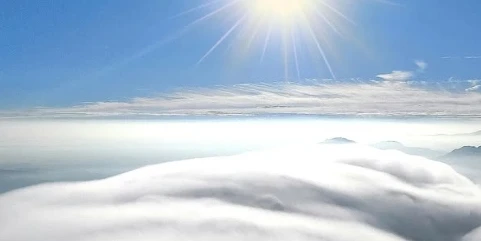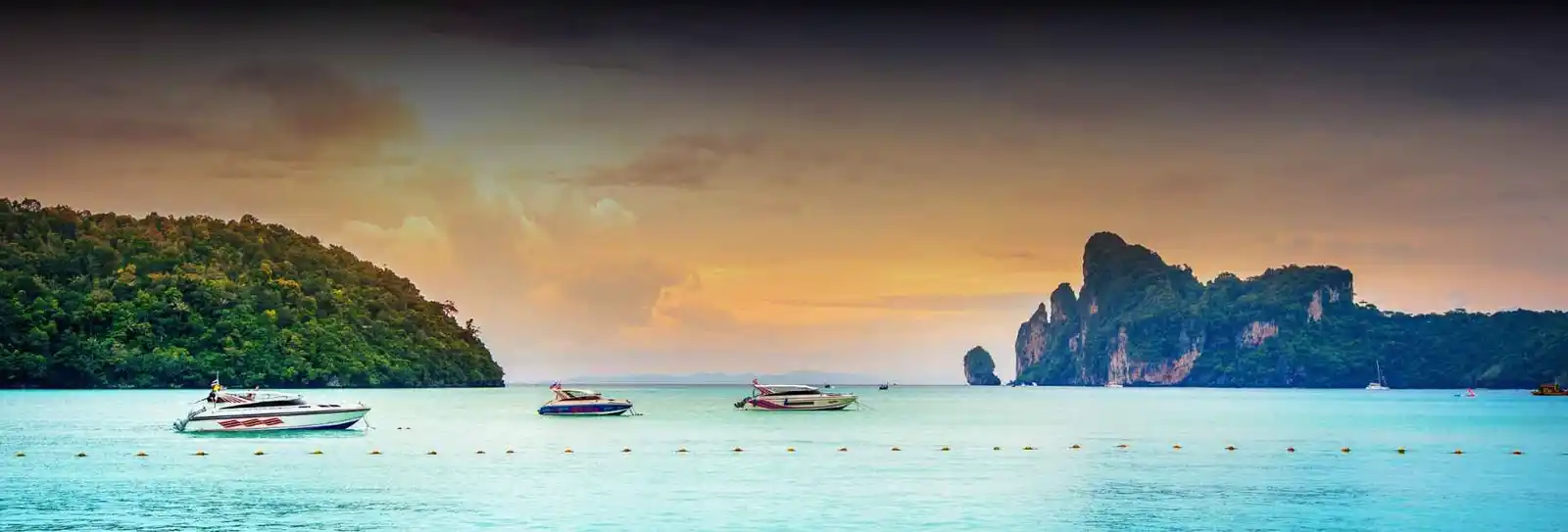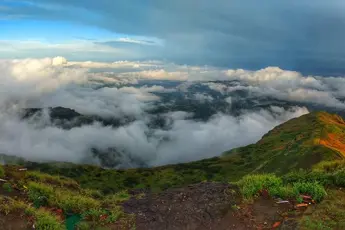
Kalsubai Peak is the tallest peak in the state of Maharashtra and stands proud at a height of 1,646 meters or 5,400 feet. Situated in the mountain range of the Western Ghats, it has been one of the frequently used nicknames, "Everest of Maharashtra"-that the hill has been ascribed with. Be it a seasoned trekker or a first-timer, it attracts all kinds of people. It is the part of the Sahyadri mountain range popular for its unkind landscape, thickly covered with green grasses and its wonderful scenery, , therefore has become a wonderful destination for not only lovers of nature but also for adventurous tourists.Trekking and the Starting PointsThe route of the trek is an important aspect in planning a trekking adventure since it would largely determine the experience. The two most popular trekking routes differ in terms of difficulty and unique scenic beauty, namelythe Bari Village Route and the Indore Village Route. Here is a comparison of these two trekking paths in detail:Bari Village RouteThe Bari Village Route would most probably be used as a starting point for trekking. The one most frequently adopted both for experienced as well as inexperienced trekkers because of the middle levels of difficulty with the ease in accessibility towards the route, since the Bari village falls upon a reasonable network of roads, thereby easily reachable from there. In the early sections of the hike, you traverse through the rich oak and rhododendron forests, which offer complete shade and a serene environment. It climbs steadily along as you make your way along with views of valleys and distant peaks all around. The major sightseeing landmark for the Bari Village Route is the view that captures the whole valley.There are several panoramas from there, so enjoy them to your heart's content. Later in the trek, a small river crossing can serve as a nice stop for resting and refreshing on warm days. The trail is pretty well marked with clear marks on the way. This trek has most parts of slow, gentle moves, but with a good ascent as one reaches the higher reaches of the trek. As such, this kind of trek is perfect for those trekkers who would want something challenging yet manageable enough for them to compete with. This can be undertaken with an average duration of 4-6 hours, depending on the group's speed. Some main viewpoints would be viewpoint, dense forest and river crossing.👉 Looking for a thrilling sunrise trek near Pune? Don’t miss the chance to experience the Kalsubai trek with Escape2Explore. This guided adventure offers scenic trails, an ancient fort, and breathtaking sunrise views — perfect for weekend getaways and nature lovers.Trek ItineraryDay-wise Itinerary for Kalsubai Peak Trek from Mumbai/PuneDay 1: Mumbai/Pune to Bari Village Leave early in the morning from either Mumbai or Pune, depending on which base. This drive would take about 3 to 4 hours to reach Bari village, which would be the starting point for trekking to Peak. Bari Village is at the foot of Peak, and it is the perfect starting point for the adventure ahead. The early morning departure ensures that trekkers arrive by late morning, giving them enough time to prepare for the trek and get acquainted with the surroundings. Upon arrival at Bari Village, trekkers will gather, meet their trekking guide, and prepare for the ascent.Day 2: Summit After breakfast and briefing, they begin their trek by ascending towards Peak, which is said to be the highest in Maharashtra at an elevation of 1,646 meters or 5,400 feet. The trek from Bari Village to the summit takes about 6 to 7 hours, depending on the fitness level and the pace of the trekkers. For first-time trekkers, the journey might take a little longer as there are several stops along the way to catch breath and rehydrate. Seasoned trekkers can move at a faster pace but should not rush to enjoy the natural beauty and views of the place.Day 3: Once the trekkers have savoured the views and clicked photographs at the summit, it is time to begin the downward journey. The trek down will take around 4-5 hours, depending on the speed of the trekkers. First-timers should be careful as descending is equally challenging as ascending. It is extremely important to wear the right shoes and use trekking poles for support in walking on the rock trails. The return journey will allow viewing the panorama from a different perspective. For those who want to take the trek a little slower, there are options for camping on the way down or close to the summit. This will allow trekkers to spend one night in the wild.Recommended Itineraries for First-Timers vs. Seasoned TrekkersFor first-timers, it is best to take the trek at a leisurely pace. Beginners will need more time on the way up, especially in parts with steeper inclines and ladders. The trek should be undertaken with the knowledge that it will take longer to reach the summit, and one should enjoy the journey and the beauty of nature. Ample water, food, and also a small kit of first aid should be available for beginners while trekking and ensure that enough breaks are undertaken to avoid any form of fatigue. The possibility of camping serves as an ideal opportunity to split the trek through space, create breaks in the evening and make it possible to take in what the mountainous environment has to offer.Experienced trekkers can push up the climb and focus more on the challenge of the body. Experienced trekkers would be looking at completing the trek in a relatively shorter time, though they should be careful with some of the tricky parts. Experienced trekkers know better how to pace themselves and take fewer breaks to get to the summit but appreciate the view at the same time. They may also want to make an early descent though still adhering to the safe conditions, of course, once one is passing down the hilliest areasWhether it would be one's first time, or not Peak will be such a memorable climb and conquest also with these itineraries, one would be able to develop one's needs into a safe and rewarding adventure. Type of Trek Classification: Easy-Moderate Trek Trekking trails can be classified into three broad categories: easy, moderate, and challenging. The most common classification is based on the overall difficulty of the terrain, altitude, duration, and other factors such as weather conditions.The trekking is easy: the tracks are well-trodden and very low-gradient of tracks. Duration of the trek: 1-3 days. Altitude below 2,500 m (8,200 feet) The tracks are normally at low altitudes. For that reason acclimatization is not such an issue, so this would be a really easy trek as there would have been simple ascents, pretty much on moderate slopes that walk through forests and meadows through villages.Intermediate Treks: These are for those who have some previous experience in trekking. The duration of such a trek can be anything between 3 to 7 days and the altitude will lie between 2,500 to 4,000 meters (8,200-13,100 feet). The trek will include more strenuous climbing, stony tracks, and a few river crossings. The requirement can also be some basic skills and physio fitness for trekking.Trekking: These are long treks, requiring extremely advanced trekking skills, excellent physical fitness levels, and some experience of prior trekking. These treks usually require a longer time in days (7-15 days), high altitude (over 4,000 meters or 13,100 feet), greater slopes, and extreme climatic conditions. Certain challenging treks involve glacier crossing, rock climbing, or technical mountaineering.Tips for Beginners and First-Time TrekkersFor beginners, begin with easy treks to gain confidence and know how your body reacts to physical exertion. Familiarize yourself with basic trekking gear and techniques, such as proper footwear, using trekking poles, and knowing hydration and nutrition needs. Always pace yourself, take regular breaks, and hydrate frequently. Start with shorter treks and gradually increase the difficulty level to build stamina and confidence.Best Time to Visit KalsubaiThis is often called the "Everest of Maharashtra." It is one of the popular trekking spots, especially for adventure lovers who want to challenge themselves with a moderate level of trek. The mountain offers a panoramic view of the Western Ghats, which attracts trekkers from all over the country. The best time to visit is mostly dependent on the season, which offers a unique experience. Here's a breakdown of the seasonal variations:Monsoon (June to September)The peak of Hill is a visual feast during the monsoon season when lush greenery decks all over. The forest trails come alive with the adventure of streams and waterfalls. The temperature is cool, and the entire landscape is vibrant and alive with fresh flora. It also presents challenges during the monsoon. The trekking routes become slippery as the ground is saturated, and thus, the journey becomes even more rugged and dangerous. Mist reduces visibility, and in most places, routes become soggy. This can be inconvenient to most trekkers unprepared for this kind of situation.Winter (October to February)For most people, winter is a perfect time to visit Hill. The weather is cool and pleasant, ranging from 10°C to 20°C, making it perfect for trekking. Clear skies and crisp air allow breathtaking views of the surrounding hills and valleys, and the paths are dry, so the risk of slipping is low. Winter offers a chance to catch a glimpse of migratory birds and enjoy a more comfortable and enjoyable trek. This is the peak tourist season, so you are sure to find many fellow trekkers on the trail. Warm clothing is a must-have, especially if you plan to trek in the early morning or late in the evening, as the temperature could drop instantly.Summer (March to May)Summer in Hill is hot and dry, with the temperature soaring to 35°C and above. The scant rainfall dries up the moist, greenly grown vegetation that remains after the monsoon and leaves an even drier climate. Though blistering suns would make the trekking tough, the benefit summer has over other seasons is the fact that it encounters lesser crowds, and so it forms a quiet time and private space for trekking. If one wants to avoid crowds, this is a good time, but get ready for the worst weather. Carry lots of water, lightweight, and easily breathable clothing. Avoid heatstroke by taking the right precautions.Pros and Cons of Trekking in Different SeasonsTrekking in Monsoon (June to September)Pros:Colours of Green: The rain brings a green boom, with waterfalls and streams, that enhances the scenic beauty of the trek.Cooler Climates: Despite the difficulty it poses in trekking, the cool climate helps to ease off the hot summer weather.Less Crowded: Since it is an off-season trek, the trail for trekking is less crowded, and therefore, the trekkers can have their solitary experience of trekking. Cons:Slippery Trails: Rains and puddles can make trails slipperier, and one will be vulnerable to accidents.Bad Visibility: At times, rains and heavy fog may hinder views, especially those at the top.Monsoons: Since it rains constantly, paths tend to become sticky, causing many landslides and flash floods. Winter Trekking (October to February)AdvantagesBest Weather: This hil becomes the best season for trekking in winter as there are clear skies, cool temperatures, and comfortable trekking conditions.Perfect Views: Little or no mist during winter makes it the best season to enjoy the best views of the surrounding landscapes, particularly with the beautiful peaks of the Western Ghats.Perfect for Photography: The clear atmosphere and good weather make winter the best time to take great shots of the landscape.Disadvantages:Crowd: It is the tourist season during winter, and therefore, the trail might be full of people, which reduces the overall seclusion of the trek.Cold Mornings: Early morning or late evening may be pretty chilly, and the trekkers must be equipped with warm clothes to not feel uncomfortable.Limited Availability of Water Sources: Some natural water sources along the trail may dry up in winter, so it's essential to carry enough water.Summer Trekking (March to May)Advantages:Less Crowded: If you're looking for solitude, then summer is a quiet trek with fewer fellow trekkers along the trail. Easy for New Trekkers: For sensitive cold and also people who are comfortable in warmer climatic conditions, summer trekking feels much more comfortable.Cons:Scorching Heat: The heat will be unbearable. It makes the journey even more challenging. There is one major danger of such a trek-the danger of dehydration. Loads of water should not be forgotten by the trekkers.Arid Landscape: The land might look unattractive since it lacks lush green leaves during the monsoon.Not very Comfortable: The heat exhausts and the body gets fatigued particularly during the time between noon to One should, therefore, get up early in order not to walk at noon when the heat is maximumWildlife Sightings: Extremely rare wildlife sightings can be seen on Harishchandragad. The predators of the sanctuary are mostly elusive, and a lucky trekker might sight tigers or leopards during their sojourns. Wild boars, monkeys, and deer of various species can be sighted in the lower forest areas. The diversified terrain of the sanctuary, deep valleys, rocky outcrops, and pristine water bodies provide perfect spots for animal sightings, especially at dawn and dusk when the wildlife is most active.Short Summary: Harishchandragad Wildlife Sanctuary can be called heaven for nature lovers since it has the rich and diverse experience of flora and fauna. This sanctuary offers an unforgettable experience to botanists, birdwatchers, and not to forget wildlife enthusiasts with sheer natural beauty and abundant wildlife.Key Attractions Along the TrekThe Trek is one of the most popular treks in Maharashtra, also known as the "Everest of Maharashtra" because it is the highest peak in the state. It provides a rich mix of history, adventure, and spectacular scenic views, making it a must-do for any trekking enthusiast. The key attractions along this trek enhance its appeal and create lasting memories for those who take the challenge.Kalsubai Temple at the SummitThe thrilling feature of the Trek is the Temple, standing atop the mountain. This temple is dedicated to the Hindu goddess. The locals and the trekkers view this temple as a sacred place for their pilgrimages. Once you get onto the steep trail, the serenity released by this temple gives spiritual harmony. It is one of the stoppages for trekkers to rest and enjoy the panorama view of the landscape surrounding. The temple itself is a simple structure, but its location makes it very important. It is precious in every way as this adds a spiritual touch to the trek, and its hard climb makes it truly worth climbing.Ladder SectionsThe trek is famous for its thrilling ladder sections. They are arguably some of the most iconized and challenging parts of the climb. At several strategic points on the trail, one discovers these iron ladders placed to assist trekkers in climbing steep slopes. They provide an adventurous dimension to the trek, requiring both physical strength and mental focus. Though intimidating, they are maintained and conquerable. The moment one climbs up them, it is unmatched. The views from where the ladders are constructed offer some of the most spectacular sights in the whole stretch and one gets a truly satisfying view of mountains and valleys during the trek.Scenic ViewsThe best part about the Trek is the panoramic view that a person is treated with while ascending the hill. Panoramic views from the summit will welcome trekkers to the majestic mountain range called the Western Ghats, which stretches in the state of Maharashtra. Hills covered with lush green are some of the finest sights nature has provided, especially during the monsoon when the region is blanketed with the most vibrant foliage. Views of the Bhandardara Dam nestling in the valley below are equally captivating. This includes the rugged hills surrounding serene water from the dam, making it a perfect contrasting view against the deep blue of the sky. The Alang-Madan-Kulang forts, visible from the summit, add a touch of history to the trek by reminding trekkers of ancient fortification and strategic importance. The whole location is so captivating and picturesque for nature lovers, and the very reason trekkers also get attracted to visit Hill.Other Places to visitIn case of other options besides the treks, several places are visible in the range. Bhandardara region Arthur Lake, with the quiet sound of a gentle lake and soothing ambience for just relaxation and boats. This place is beautiful; the lake itself is surrounded by lush forests and rolling hills, and the major attraction around Randha Falls has to be explored. This spectacular waterfall is among the largest waterfalls in this region and photography enthusiasts find the best opportunity around the falls at the time of monsoon seasons when the force of the waterfalls is visible. The last attraction is the Bhandardara Dam, which is primarily known for its serene beauty and tranquil environment. It is so serene that it is a perfect place to de-stress after a challenging trek.Trekking Gear and The Backpack Packing ChecklistProper luggage and packing for a comfortable, safe, and enjoyable trek are all part of the necessary gear. It can be rugged or simply quiet. There is nothing quite like landing in a beautiful landscape - no matter how rugged the terrain - and having all you need to survive and thrive. Keep reading to find out about your essential trekking gear and backpack packing checklist:Clothing Recommendations Based on the Season:Summer Treks: For warm weather, you should carry lightweight, moisture-wicking clothing. Breathable shirts made from merino wool or synthetic fabrics will take away sweat and keep you cool. Light pants or shorts with sun protection and a wide-brimmed hat for sunshade are also recommended. Don't forget sunglasses and sunscreen. Winter Treks: For the cold, remember that layering is the key. Moisture-wicking base layer, fleece or down mid-layer, and outer shell which should be waterproof and wind-resistant are essentials. Thermal socks, insulated gloves, beanies, and scarves are almost must-haves for warmth. Waterproof pants and warm boots are an absolute necessity in snow and slush. Trekking in Rainy Season: A water-resistant, lightweight, and breathable rain jacket should be carried along with waterproof trousers. Quick-drying clothes will always be the best choice to avoid the feeling of dampness for more time. A poncho also is a good secondary option to protect you and your backpack from the rain.Trekking Accessories: Shoes, Backpacks, Water Bottles, and Trekking Poles:Shoes. These are very crucial equipment for you. As for hiking boots, ensure ones that offer fine ankle support and appropriate cushioning besides having no slipping sole. Waterproofing will do for the wet condition of your journey. In less severe treks you may opt even for trail running shoes since you won't expect so much from them.Backpacks: A comfortable and well-fitting backpack is key to carrying your gear. For a one-to-three-day trek, a 40-50L backpack should suffice. Look for features like padded shoulder straps, a hip belt for weight distribution, and sufficient compartments for organization. Consider hydration packs for easy access to water.Water Bottles: Hydration is key during a trek. Take along a good, BPA-free water bottle; insulated is even better for keeping the water cool. A hydration reservoir (bladder) in your backpack comes in handy to sip in a drink without stopping.Trekking Poles: trekking poles offload some of the pressure from the knees, especially downhill. They provide steadiness and support on uneven surfaces. Try finding lightweight, collapsible poles that are light enough when folded to be carried.First-Aid Kit and Personal Essentials:First-Aid Kit: This compact first-aid kit will carry bandages, antiseptic wipes, blister treatment, pain relievers, tweezers, and personal medications. In case of minor injuries, the small, portable first-aid kit with gauze, plasters, and band-aids would suffice.Personal Needs: Headlamp, multi-tool, compass or map, snacks, toilet paper, and biodegradable soap are just a few examples. Small notebook and pen will come in handy, as well as a camera or phone for photos.How to Reach KalsubaiThis is located in the Western Ghats and is the highest peak in Maharashtra, standing at 1,646 meters above sea level. This iconic trekking destination has always been a dream destination for adventure enthusiasts and nature lovers. Here's how you can get to Hill from major cities like Mumbai and Pune.By Public Transport from Mumbai/PuneTrain: Igatpuri and Kasara are the closest stations to the railway route and both Mumbai and Pune have trains that run to those stations regularly. You may take any train from the Mumbai CST terminal for Kasara which is some 80 k from here and the nearest halt on the western line to igatpuri is only about 80 to 90 km from here, whichever is convenient, from each station, on arrival you need to hire private vehicle/taxi from there to reach Bari Village. By Bus: There are many private buses and government transport facilities from Mumbai and Pune to Igatpuri and Kasara. You can reach both the places through MSRTC buses from these cities. Local transport facility would be available after you reach these places to go to Bari Village.By Private Vehicle From Mumbai/PuneThe journey is very smooth if you travel in your car. From Mumbai, drive on NH 3 or Mumbai-Nashik Highway up to Kasara or Igatpuri. It takes nearly 2-3 hours from Mumbai and almost 4-5 hours from Pune, as it depends upon the traffic. From either of the stations take a car up to Bari Village, the base village of Kalsubai, which takes about 30 minutes. The road is excellent, and a beautiful drive accompanies the entire activity.Igatpuri and Kasara, are the nearest Railway Stations.The nearest railway stations to Hill are Igatpuri and Kasara. The basic access points for most trekkers to hill are these two stations, though Kasara is a little closer than Igatpuri as it is about 30 km from Bari Village, the base village for the trek. However, Igatpuri and Kasara are well connected to Mumbai and Pune through regular trains, so one can prefer these stations while travelling by train.Why Book with escape2exploreWhen exploring Kalsubai Trek from Pune or night treks in Maharashtra and beyond, escape2explore stands out as a trusted name in adventure and experiential travel. Here’s why hundreds of travellers choose us for their getaways:Trusted, Well-Reviewed Local Operator: escape2explore has gained the trust of thousands of content tourists all over India. With persistent positive feedback and an unblemished reputation for delivering quality experiences, we assure you that your experience will be hassle-free, memorable, and value-packed. Our insider local knowledge guarantees that you will always be in safe hands.Seasoned Guides: Our trips are led by friendly, trained, and professional guides who are passionate about the outdoors and your safety. Whether it's a beach trek, a cultural tour, or a spiritual walk through temples, our team knows the terrain, the stories, and how to make each moment count.Safe & Curated Itineraries: Your safety is our number one priority. Our tour packages are thoughtfully crafted with safety measures, researched accommodations, and easy travel arrangements. We take care of the details so you can have the experience hassle-free and worry-free.Unique Experience That You Won't Find Anywhere Else: With escape2explore, you discover more than the tourist attractions. We go off the beaten track with hidden beaches, unusual treks, offbeat cultural destinations, and true interactions.Read: Devarayanadurga|Chinaga Betta|Avala Betta|Gudibande Fort|Horagina betta



